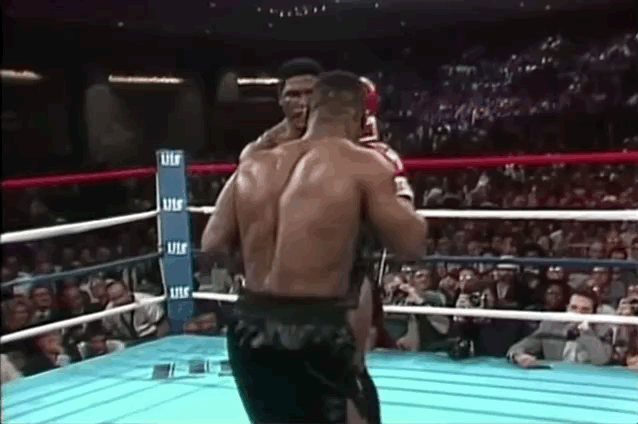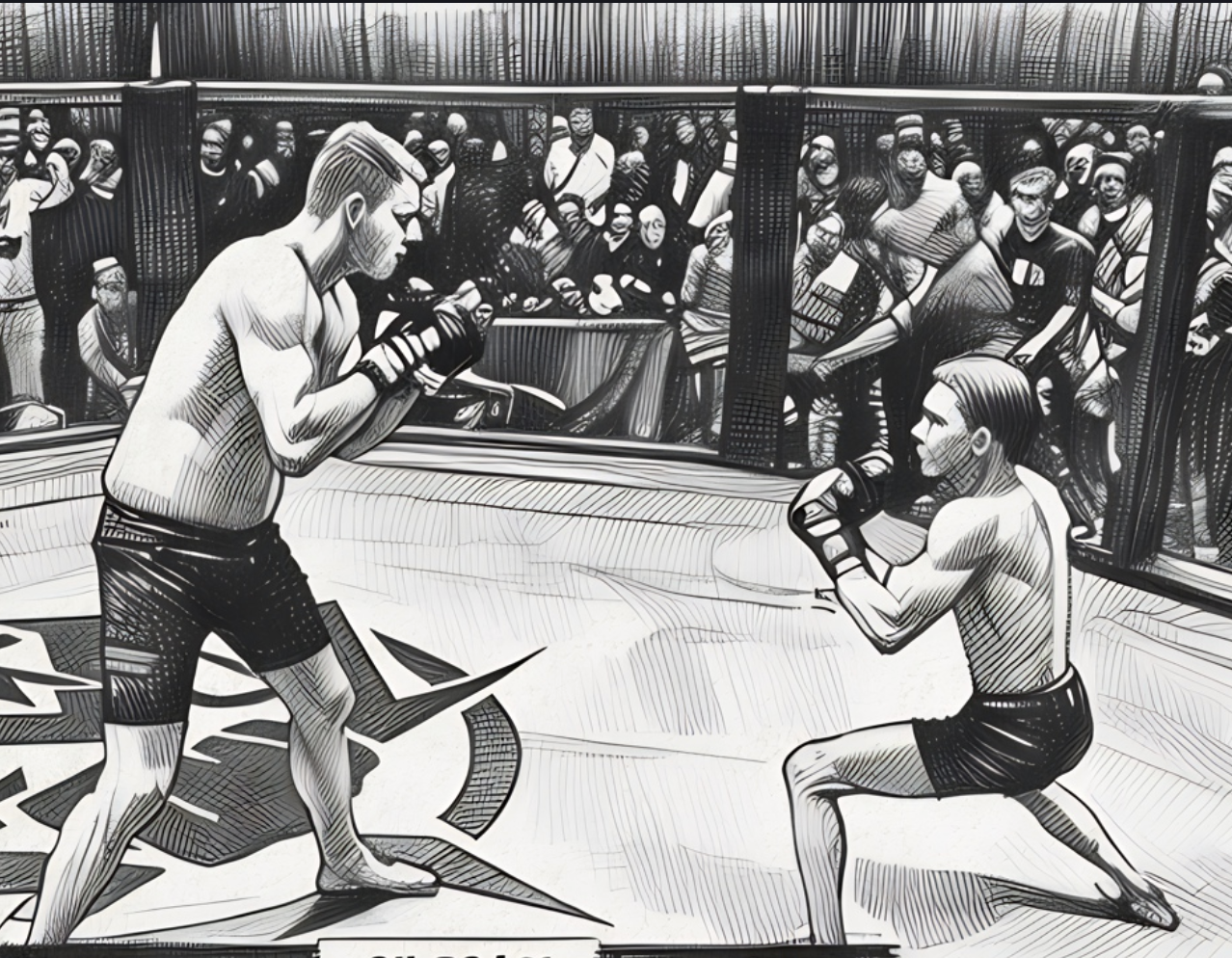
In all of combat sports, I can only name two fighters off the top of my head who possess scary, devastating knockout power: Former UFC heavyweight champion Francis Ngannou and the OG baddest man on Earth, Michael Gerard Tyson.
These are the only two dudes alive today who bring that aura. Ask any long-time fight fan. They’d tell you that whenever you’d see either man’s name on the fight card, you’d be thinking, Oh, somebody’s gonna die tonight.
I was around eight when I first heard Mike Tyson’s name from my uncles at the adult’s table during dinner. And at that age, I saw why his fights were huge spectacles. I saw what the big deal was.
Iron Mike brought a different level of ferocity that nobody saw in heavyweight boxing at the height of his career in the 1980s. What Ali did with style and finesse, Tyson did sheer savagery. It was captivating, enthralling, and jaw-dropping, to say the least.
I understood Tyson’s plight (if he would even call it that) as the perennially shorter fighter. At 5’10”, most of his opponents towered over him.
Frank Bruno stood at 6’3”. Larry Holmes, 6’3”. Tyrell Biggs, 6’5”. And in all of these fights, Mike gave up at least five inches in reach.
But guess how all of those fights ended.

Now, why is that? Heavyweights can punch the lights out of you, that’s a given. But what exactly made Tyson so successful?
To answer these questions, we’ll trace it all back to his mentor Cus D’Amato, the man behind one of the sport’s most innovative styles.
Mike Tyson and The Peek-a-Boo
You’ve got to hear the great Teddy Atlas’ breakdown of the Peek-a-boo. The man speaks with so much passion and vigor, it’s amazing to watch. Here’s an excerpt.
If you’re not familiar with this particular style, the name itself should give you a clue. The fighter has both hands stuck to his chin, knuckles side pointed towards the ceiling. Both elbows are tightly tucked in to obstruct potential threats to the body. Weight planted on the balls of both feet for better mobility.
It’s called the peek-a-boo because the hand placement mimics the baby game of the same name.

The peek-a-boo allowed Tyson to bob and weave through his opponent’s offensive threats a lot easier. He was also more efficient in distributing weight between both hands and preloading his punches before they landed.
And once he gets in range, then he unleashes his attacks.

One thing I loved about Tyson’s style is that he always stuck to the fundamentals. He will throw a jab to test the waters, as any technical, sensible fighter would do.
His Fight IQ has always been off the charts. He won’t headhunt as many of his careless peers would. He would dismantle you like a deck of cards, targeting the breadbasket first as you curl up into a standing fetal position.
Once you’re in a balled-up mess, that’s when he pounces. Like a cheetah to an injured gazelle.

Now, I mentioned the usual size advantage that Tyson’s opponents usually held against him. On the basketball court, maybe that matters. In boxing? That height disadvantage bodes well with the peek-a-boo.
As you’ll see here when he fought Trevor Berbick in ‘86, Tyson slipped the incoming punch with relative ease. Both hands were locked which tightened his defense and made him more mobile to unload his counters.

Berbick took all of Tyson’s shots like the champ that he was. But by the end of it all, he was doing the drunk uncle dance. Referee Mills Lane had seen enough.

You’ll notice how Tyson’s movement appears crisp, polished, and consolidated. He’s never in a sloppy, compromising position, especially when he switches to kill mode.
It’s the obvious byproduct of thousands of hours of drilling and honing. Repetition, after all, “is the mother of all learning, the father of action, and the architect of accomplishment.”
Weapons training
So how does the Mike Tyson sharpen the tools of the trade? A peek into his pad work should give you some answers. Here’s one during his earlier years as a young lion with his former trainer Kevin Rooney. Do yourself a favor and watch this with the sound on.
And here he is just a year ago when he was preparing for the Roy Jones Jr. show. 54-year-old Mike Tyson, ladies and gentlemen.
Now, maybe you’re thinking about how Mike Tyson did during his sparring sessions in his prime. Well, wonder no more.

Tyson’s been drilling the same fundamentals since started boxing in his early teens under the watchful, scrutinizing eyes of Cus D’Amato. He ingested these techniques to the core and left nothing on the plate.
By hook or by crook, he held onto these sets of skills. It didn’t matter whether he was in the gym or under the bright lights at the Las Vegas Hilton.
Indeed, they never made another fighter like they did with Mike Tyson in the ‘80s. All respect and props go to the great Cus D’Amato.
‘Punch through’ your opponent with ‘mean intentions’
Tyson was once asked how he developed such immense power in his punches. This is what the man had to say:
I think I was born that way. But I developed it through Cus D’Amato telling me repetitiously over and over again to do this movement and to punch with this type of bad intentions.
And just to have ferociousness and mean intentions whenever you throw your punches. And try to punch through your opponent, not at him.
The first part is easy to understand. Mike Tyson was a troubled youth out of Brownsville, New York, and to say he had a rough childhood is an understatement. He was jeered for having a lisp and a high-pitched voice, which led to countless street brawls.
By the time he was 13, he’d been arrested 38 times.
His life finally straightened out when Cus took him in. But he definitely had a chip on his shoulder as he carried all the baggage and pent-up aggression. So when he was told to channel all of that by throwing each punch with the meanest, illest of intentions, it wasn’t difficult to do.
Now for the part about “punching through” an opponent and not at him. You’ll see that with the way beginners hit the heavy bag. Here’s what I mean:

Our dude here is pulling his punches back as soon as they hit the bag. Not only is it less powerful, but it also creates poor habits when sparring or fight day comes.
Here’s how Tyson hits the bag. Imagine these shots hitting some poor guy’s liver. Yeesh.

See the difference? All the power begins in his legs, and goes up to his left hip, which then torques it up to his arm. In short, kinetic linking is at work here.
One of those shots will have you peeing blood in a matter of minutes.
Now drill that over and over in the gym and see how seamless the transition is to the ring. Bodies just fall like dead flies.
The Mike Tyson psychology
Fighting, they say, is 90 percent mental. Some of the greatest minds in martial arts may dispute that, but you can’t deny how much psychology played a role in all of Tyson’s victories.
Mike gave us all a peek into the inner workings of his mind in the mere moments before he goes into battle. If you haven’t heard this speech yet, it’ll give you chills.
When I come out, I have supreme confidence. But I’m scared to death. I’m totally afraid. I’m afraid of everything. I’m afraid of losing. I’m afraid of being humiliated.
The closer I get to the ring, the more confidence I get. All during my training, I’m afraid of this man. I thought this man may be capable of beating me. I’ve dreamed of him beating me.
Once I’m in the ring, I’M A GOD. No one could beat me.
Some of you might call it arrogance. Others see it as a sign of an unchecked ego. But you can’t rise to the top without a healthy level of narcissism. You simply can’t dominate without a few more ounces of self-belief than the average person.
There’s definitely a thin line between arrogance and confidence that you shouldn’t cross. Doing so could merit potentially fatal consequences. But in this case, it’s a secret weapon, the x-factor that helps trample the competition.
By the time Mike Tyson steps inside the ring, nine times out of then he’s already won half the battle. And if you had this face staring you down in the mere moments before you lock horns, what else do you have left to do?

‘Everybody has a plan… until they get punched in the mouth’
It’s one thing to have technique and finesse. You wow and win over the audience with pizzazz and style points. That approach warrants respect.
But then you have the rare breed of fighters like Mike Tyson who can turn your lights out and leave you asking “What the fuck happened?” as you’re getting propped up on a stool.
Especially during his prime years, no game plan worked. As soon as he touched you, you were pretty much done. And I think many of you will agree that heavyweight boxing will never see another fighter of his power and caliber ever again.




